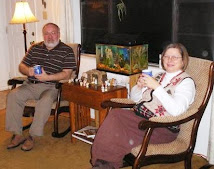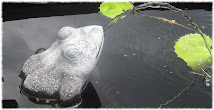
Today is the birthday of the most important name in the history of Golf. If you love Golf and wonder why it has become the popular spectator sport and pastime it is today, you must understand Arnold Palmer, the King. Arnie is 80; long live the King!
I have seen Arnold denying this in a number of venues in recent days. He doesn't consider himself to be a King and has fought the notion until he recognized it was a futile effort. The Golf Channel has made a big deal about his birthday, counting down the days for weeks now. And why not? Without Arnold Palmer, there would be no Golf Channel. Without Arnie there might not be a Tiger Woods.
Without Arnie, I might never have become a golfer. My Mom and Dad introduced me to golf via Shell's Wonderful World of Golf and other TV shows we watched about golf. Many focused on Arnold Palmer. They loved the game themselves, and they encouraged me to caddy at our local Country Club, which at the age of 12, introduced me to a wonderful world that has stood me in good stead over the course (!) of my 57 years on this earth.
At the Country Club of Ashland, I learned to play golf by caddying for some of the best golfers in the area, and by listening to our pro and the top amateurs talking about the golf swing. I caddied for a few years, worked in the pro shop, worked as the caddy master, cleaned clubs, mowed greens, watered the fairways as an assistant to the Head Greenskeeper, worked in the Pro Shop. Basically, I worked everywhere around the Country Club except the kitchen.
Although I haven't always had time to play as much as I would like, when stationed in Rota, Spain, and Yokohama, Japan, I was able to play many weekends a year at the excellent golf courses provided by the U.S. Military.
But this post is really about Arnold Palmer and the effect he's had not only on my life but on the world. If you have paid any attention to the media in recent days (and especially if you watch the Golf Channel) you may have noticed that the King, Arnold Palmer, turned 80 on September 10th. I will not try to recreate all of the wonderful accolades and tributes to Arnie that have been written in recent days, but to give you a taste, here's a link to a nice article, fittingly in a Pennsylvania paper. PGA.com also has a great collection of recollections of Arnold Palmer by members of the PGA (club pros) who had the pleasure of meeting him.
My main point about Arnold Palmer is how he brought golf into the world of the average person. His advent coincided with the rise of television and the presidency of Dwight Eisenhower, an avid golfer and a friend of Arnie. He spurred U.S. participation overseas with his faithful participation in the Open Championship, for example. He always had time to greet people and to sign autographs. He was the quintessential everyman and the model citizen of the golf world, a courteous gentleman, who made more friends among the throngs of fans than any of us could imagine. His sportsmanlike behavior, emulated by his good friends, Jack Nicklaus and Gary Player, became the standard by which golfers in subsequent generations would come to act—to treat one another, and their fans, with honor and respect.
In an age when athletes in most professional sports stand out for their brushes with the law or gambling on their sport or domestic abuse, golf stands apart, seemingly in a world of its own. Arnold Palmer and his wife Winnie created and support hospitals, cancer research, the March of Dimes, and were just simply always involved in using their wealth to help people. Furthermore, Arnie—the friend of kings, presidents, and movie stars—always had a moment to smile at a child or the person who cleaned the locker room. As a guy who worked at that kind of a job as a kid, I know how much that means.
If Arnie had never appeared on the scene, I might not be an avid golfer today, and therefore I owe him a great debt of gratitude. Thank you, Arnold Palmer. Thank you, Arnie, and Happy Birthday from one of your biggest fans.....Long live the King!
This just in: birthday quotes from Arnie's fellow tour professionals and luminaries like Presidents George H.W. Bush and Bill Clinton. 
















































